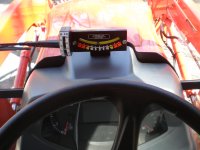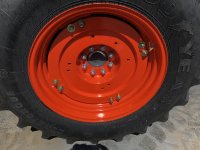aczlan
Good Morning
- Joined
- Mar 7, 2008
- Messages
- 17,540
- Tractor
- Kubota L3830GST, B7500HST, BX2660. Formerly: Case 480F LL, David Brown 880UE
I would say to leave it on and low enough to be just above the ground for the first few mowings. That way you can find stumps and rocks with the bucket instead of with the front axle or the underside of the tractor.You think the lesser weight from the FEL is better gone than if I'm carrying it low, just above the ground? I figured that weight, on balance, would be better on the tractor.
Aaron Z



